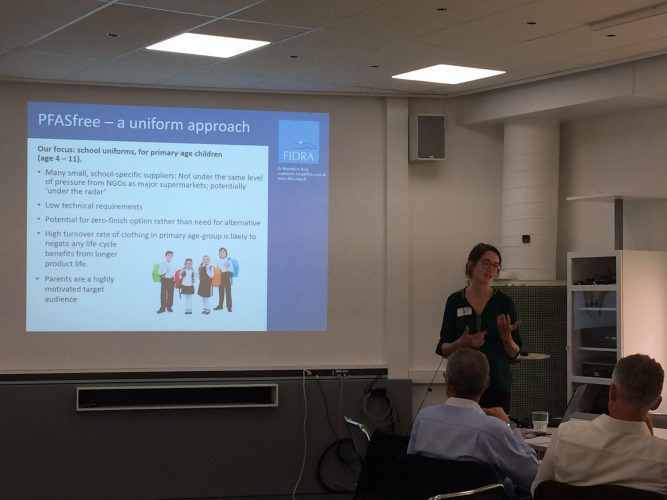At the end of May, I was delighted to have the opportunity to head to Gothenburg, Sweden for the first working meeting of our POPFREE project. It was my first time in Sweden, and the first opportunity for us to meet all of our collaborators on this exciting, international and multi-pronged project.
The POPFREE project aims to find alternatives for PFAS over a range of different consumer products, by combining expertise and technical knowledge from a host of different companies and research organisations. An important aspect of the work is testing environmental impact of alternatives – we all want to make sure any PFAS-free chemicals are not themselves harmful to the environment. The project has big ambitions, and includes representatives from the cosmetics, outdoor clothing, ski-wax, paper and packaging, and textiles industry, as well as research scientists from across Scandinavia, and NGOs like us. Find out more at the POPFREE website.
The meeting kicked off with a delicious dinner and a chance to meet and swap stories. It was intriguing to get an insight into how and why many companies in Scandinavia are voluntarily phasing out PFAS from their products, and the efforts some retailers have already gone to in order to make this a reality.
The actual work started early the next day, at the Swerea research institute, with a tour of the extensive facilities. The laboratories test consumer products for technical quality (durability, water & stain resistance, strength, etc.) as well as being able to analyse for a range of different chemical compounds. This includes certain PFAS compounds, such as the best known PFOA and PFOS. A children’s rucksack was currently being put through its paces, with holes cut out of every component, to make sure every part of it was free of harmful chemicals.
These fantastic research facilities are available as part of the two-year POPFREE project – today’s meeting was to plan exactly how to use them. The meeting was a chance for all the consortium members to explain in person what they were looking for from the project and find out what progress had already been made in different research groups. I gave a presentation about Fidra’s School Uniform survey results – and the reasons why we think that stain-resistant coatings might not be needed at all. You can find out more about that from on our Research pages.
Fidra will be contributing to the project through by continuing our dialogue with UK retailers who stock uniforms, spreading news of results as they begin to appear through the project, as well as continuing our own research into the needs and wants of UK consumers. We’re excited to work together with scientists and make sure our project goals are backed up by cutting-edge research.


